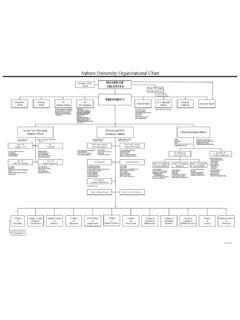Transcription of WORLD TRADE CENTER CAMPUS - Welcome to NYC.gov
1 WORLD TRADE CENTER CAMPUS security PLAN FINAL SCOPE OF WORK FOR THE ENVIRONMENTAL IMPACT STATEMENT CEQR No. 12 NYP001M Lead Agency: NYC Police Department Prepared by: Philip Habib & Associates AKRF, Inc. the LIRO Group April 1, 2013 -1- WORLD TRADE CENTER CAMPUS security PLAN FINAL SCOPE OF WORK FOR AN ENVIRONMENTAL IMPACT STATEMENT CEQR NO. 12 NYP001M April 1, 2013 A. INTRODUCTION This final scope of work outlines the technical areas to be analyzed in the preparation of an Environmental Impact Statement (EIS) for the WORLD TRADE CENTER (WTC) CAMPUS security Plan project. The New York City Police Department (NYPD) proposes to implement a CAMPUS security Plan for the 16-acre WTC CAMPUS in Manhattan Community District 1 (the Proposed Project ) in collaboration with other New York City agencies, the Port Authority of New York and New Jersey (PANYNJ) and other WTC stakeholders.
2 Implementation of the Proposed Project is the Proposed Action. Figure 1 shows the site location in Lower Manhattan. Figure 1: Project Site Location As shown in Figure 2, the CAMPUS security Plan will create a comprehensive vehicle security perimeter for the WTC CAMPUS (the CAMPUS security Plan ) to protect against vehicle-borne explosive devices while ensuring an open environment that is hospitable to remembrance, culture, and commerce. The CAMPUS security Plan bars unscreened vehicles from entering the WTC CAMPUS and certain areas at the perimeter of the Site and creates increased stand-off distances to reduce the risk of catastrophic damage to persons and property. A vehicle seeking to enter restricted areas would be subject to credentialing to determine whether entry is authorized and screening to ensure the vehicle does not contain dangerous Project Site WORLD TRADE CENTER CAMPUS security Plan Final Scope of Work for an EIS -2- material.
3 The creation of a Trusted Access Program1 (TAP), in which WTC office tenants with parking privileges on site, residents and owners of businesses located in non-WTC buildings within the secure zone (Liberty Street between Greenwich Street and Trinity Place), for-hire vehicle operators, and delivery vehicle operators could enroll, is expected to facilitate entry for those vehicles with destinations within the WTC CAMPUS . Figure 2: Proposed CAMPUS security Plan Note: Image is schematic and conceptual. Source: NYPD The Vehicular security CENTER (VSC) planned in conjunction with the WTC development controls access to the underground traffic network that serves the entire WTC CAMPUS , including the loading docks for each building and parking areas. The parking garage will not allow general public parking; rather, the parking garage will be restricted to use by tenants.
4 All vehicles entering the VSC, including tenants that 1 PANYNJ is currently developing the TAP program. WORLD TRADE CENTER CAMPUS security Plan Final Scope of Work for an EIS -3- park on site, tour buses and delivery vehicles will be processed and screened at the VSC. PANYNJ will operate and be responsible for screening vehicles entering the VSC. As it is anticipated that demand for on-site delivery, tour bus and private occupancy vehicle (POV) parking will be considerable, PANYNJ is developing a management strategy, including scheduling of tour buses and truck deliveries, to ensure orderly and efficient operations. The NYPD and PANYNJ have coordinated to develop conceptual plans for the design and location of the proposed security infrastructure, which is discussed in more detail in Section C, below.
5 The Project Area includes all streets, sidewalks and buildings that would be directly affected by the installation of the Site s security infrastructure. This area is generally bounded by Barclay, West, Albany and Church Streets. Four vehicular entry points are planned under the proposed CAMPUS security Plan at: Washington Street and Barclay Street; West Broadway and Barclay Street; Trinity Place/Church Street and Liberty Street; and Liberty Street and West Street/Route 9A. Exits from the secure zone are proposed at the following five locations: Church Street at Vesey Street; Vesey Street at West Street/Route 9A; Fulton Street at West Street/Route 9A; Liberty Street at West Street/Route 9A; and Greenwich Street at Cedar Street. The secure perimeter would consist of various types of vehicle interdiction devices, which would include static barriers (such as bollards) and operable barriers to allow vehicle access, all under NYPD control.
6 The Proposed Action also includes the reconfiguration of Church Street from Cedar Street north to Vesey Street to create a northbound lane for screened vehicles within the security zone as well as an exit area north of Vesey Street. This secure lane would be created by constructing a four-foot-wide raised median on Church Street. An approximately 11-foot-wide inner secure lane would provide additional stand-off distance between the planned WTC buildings and the general traffic flow on Church Street. Three lanes of northbound Church Street traffic, having an approximate total width of 33 feet, would remain outside the secure zone. B. REQUIRED APPROVALS AND REVIEW PROCEDURES As described above, the WTC CAMPUS security Plan was developed in response to the continued security concerns at the WTC site. The Proposed Action bars unscreened vehicles from entering the WTC CAMPUS and certain areas at the perimeter of the Site and creates increased stand-off distances between unscreened vehicles and WTC buildings.
7 A vehicle seeking to enter restricted areas would be subject to credentialing to determine whether entry is authorized and screening to ensure that the vehicle does not contain dangerous material. As indicated above, the proposed security measures are intended to safeguard the WTC CAMPUS while allowing access for screened vehicles. Funding The WTC CAMPUS security Plan is a direct undertaking by the NYPD and would be paid for, at least in part, with New York City funds. Therefore, the Proposed Action is subject to environmental review pursuant to the New York State Environmental Quality Review Act (SEQRA) and the City Environmental Quality Review (CEQR) process. The Proposed Action is subject to review under CEQR because it has the potential to result in adverse environmental impacts and the NYPD will be the lead agency.
8 The EIS will include review and analysis of all relevant impact categories identified in the CEQR Technical Manual. The EIS will contain a description and analysis of the Proposed Action and its environmental setting; the environmental impacts of the Proposed Action, including its short- and long-term effects, and typical associated environmental effects; identification of any significant adverse environmental effects that can be avoided through incorporation of corrective measures; a discussion of alternatives to the Proposed Action; the identification of any irreversible and irretrievable commitments WORLD TRADE CENTER CAMPUS security Plan Final Scope of Work for an EIS -4- of resources that would be involved in the Proposed Action should it be implemented.
9 And a description of any necessary mitigation measures proposed to minimize significant adverse environmental impacts. Agency Coordination The Proposed Action may require or involve, among others, the following agency notifications, actions, permits and/or approvals or expertise: Federal Department of Homeland security /Federal Emergency Management Agency possible funding for all or a portion of the proposed CAMPUS security Plan Advisory Council on Historic Preservation (ACHP) Federal Highway Administration (FHWA) Federal Transit Administration (FTA) Bi-State Port Authority of New York and New Jersey possible plan funding and implementation State New York State Department of State (NYSDOS) New York State Historic Preservation Office (SHPO) New York State Department of Transportation (SDOT) New York State Metropolitan Transportation Authority (MTA) New York City New York City Mayor s Office of Environmental Coordination New York City Department of Transportation (NYCDOT)
10 Review of proposed geometric changes, street direction changes, and security elements, as well as construction permits New York City Planning Commission acting as the New York City Coastal Commission Coastal Zone Consistency review New York City Department of Environmental Protection City Environmental Quality Review (CEQR) and Scoping The Proposed Action requires environmental review under CEQR procedures. An Environmental Assessment Statement (EAS) was completed on February 8, 2012. The NYPD, acting as lead agency, has determined that the Proposed Action requires the preparation of an EIS. The CEQR scoping process is intended to focus the EIS on those issues that are most pertinent to the Proposed Action. The process at the same time allows other agencies and the public a voice in framing the scope of the EIS.


















